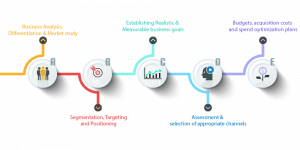Every business needs a product strategy. Before you define a product strategy, you must start with the customer. Who is your target customer and what does exceeding their expectations look like? You want to understand the needs of the customer today; in the medium term and long term, so that you examine products and services that meet the need. This means you must be data savvy. You must conduct business intelligence as part of your strategy to identify the market dynamics and customer behaviours to craft products that meet emerging needs proactively.
That said, in business, there is a golden rule of 80/20, Pareto’s Principle. Who are the 20% of your customers who bring 80% of your revenue? This helps you to narrow your focus.
On August 1, 2014, P&G, one of the leading global cosmetics companies announced it was streamlining the company, dropping and selling off around 100 brands from its product portfolio to focus on the remaining 65 brands, which produced 95% of the company’s profits. First, to take such a decision is not informed by hearsay or opinion. It is data-driven. You must make use of the available data to inform your decision-making.
Manufacturing companies try to introduce as many products as they can to see customer reactions. However, it is not easy to scale and grow with multiple SKUs or product lines. New products must be introduced, as old ones are phased out. This allows for innovation and further product testing to increase the odds of success.
Using data analytics and market research, the company identified products with the potential for success. P&G undertook a deliberate global review of their strategy by asking ‘what are the 20% of our products which bring 80% of our revenue?’ It is a known question great leaders ask. According to the rule, 80% of results result from the 20% effort. 20% of the staff bring the 80% revenue. How do you identify the 20% of staff and nurture them for long-term business growth? Give them the tools needed. The business will flourish. The same thing applies to your customers. Which 20% of your customers bring 80% of the revenue? Once identified, maintain good client relationships.
P&G asked, of our many products, which ones should we focus on? A lot of products in manufacturing means several lines of production. This comes with logistics challenges and limited bargaining power. This is why P&G reorganized to focus on profitable products. Sources of competitive advantage are out of how you rearrange your business in a way that it interconnects seamlessly to deliver an advantage that no one else can deliver. When P&G reduced its product portfolio to only focus on 66 products, it used data analytics and business intelligence in its strategic decision-making.
You can not be everything to everybody. You have to decide what to focus on. P&G removed confusion in the market by reducing the products on its shelf. You can not beat a company which focuses on one or two products whereas you produce ten. You operate on the surface. You are thinly spread. A company like Apple has only one phone brand. The company sells more revenue than companies with several phone brands. They get their best people to only focus on the iPhone. Their product is more responsive and addresses customer needs.
As a strategy lesson, where do you have a lot of capabilities to win and beat the competition? Also, given your current set-up, where do you see growth coming from? Product strategy entails identifying a few products to focus on with high chances for success while allowing for room to innovate to win.
Copyright Mustapha B Mugisa, Mr Strategy 2022. All rights reserved.


